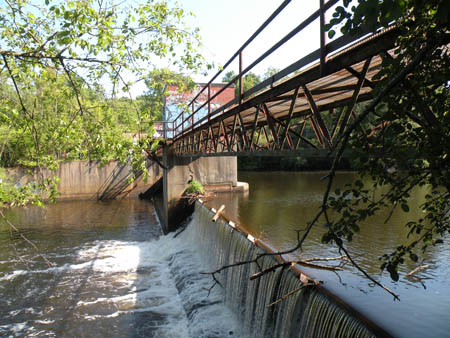July 21, 2011
 Neponset River
Neponset River
Despite recent improvements in the quality of water in Massachusetts, local environmentalists fear that quantity, not quality, is putting the Neponset River at risk.
Rivers in the state typically run at their lowest levels in the dry weeks of August; however, recreational boaters and hikers have been reporting water levels in the Lower Mills area at mid-August levels nearly a month earlier than expected. In an attempt to prevent a dwindling stream flow from doing lasting ecological damage, environmental advocacy groups and state lawmakers are calling for new regulations to preserve at-risk rivers and streams.
Earlier this month, Boston Natural Areas Network president Valerie Burns said her organization was forced to cancel a canoeing trip along the Neponset after discovering rock outcroppings breaking the surface of the water throughout their planned route despite heavy rain and snowfall earlier this year.
“You can still navigate the river in the kayak, but no canoes,” Burns said. “We’re finding we just can’t use the urban stem of the river in July and August anymore.”
According to estimates from The Nature Conservancy, the Neponset is just one of many rivers overtaxed by water withdrawals from upstream communities. More than one in ten Massachusetts rivers will see noticeable symptoms of low stream flow by the end of August.
“What’s happening in the Neponset is a good example of what’s going on in a lot of the state,” said Neponset River Watershed Association executive director Ian Cooke.
Cooke said that much of the state’s 44 inches of average annual rainfall never reaches the underground water table responsible for recharging the Neponset. Instead, the fresh water is absorbed by sewage lines and delivered directly to sewage treatment plants, used as drinking water for the more than 160,000 individuals living within the river’s watershed, or prevented from reaching the water table by impervious surfaces like concrete or asphalt.
While Cooke concedes that there is little anyone can do to reduce the impact of upstream communities on the Neponset’s water levels, state Rep. Frank Smizik (D-Brookline) and state Sen. Jamie Eldridge (D-Acton) have supported the Sustainable Water Resources Act (SWRA,) a bill meant to aid in removing unused dams, fund water infrastructure improvements, and establish water flow standards so that the condition of underperforming rivers can be addressed before low flow takes its toll on the river’s ecosystem.
Currently, the SWRA’s dam removal provision has met the least opposition from the bill’s detractors, largely because current regulations for breaking down flow-impairing dams can make the process preventatively slow.
Although local nature advocates have called for the removal of the hazardous chemical deposits that gather in pools behind many of the Neponset’s dams, debate continues as to whether or not removing the dams themselves would improve water levels.
Cedar Grove resident and Neponset Greenway Council member Ellie Spring believes that while dams partly slow the Neponset’s progress, their presence in the Lower Mills area actually helps maintain a constant stream flow, rather than the fluctuation that occurs with sudden rainstorms or dry periods.
Smizik said the bill would establish a “water banking” program by which towns could choose to charge new developments a small fee to help offset a project’s increased demand on a local water table. These fees could then be used by municipalities to pay for sewer system and water treatment improvements meant to minimize the amount of clean water diverted from a river’s watershed.
Although improved dam-removal guidelines and water banking programs have met little public resistance, water management agencies in some upstream communities believe stream flow standards could put a burden on towns that may not be directly related to depleted rivers.
In its current form, the SWRA calls for scientists to determine healthy water levels for each river in the state and these standards are compared to real-time data provided by United States Geological Service sensors already in place as a way to pinpoint where rivers are being depleted most dramatically, potentially leading to either water use restrictions or fines for nearby towns.
One opponent of the proposed standards is Sharon’s superintendent of public works, Eric Hooper. Sharon currently draws half its water supply from wells fed by the Neponset River and has limited funds to pay for additional water. Hooper spoke out against stream flow standards during a recent hearing because he worries the standards could fail to account for the constantly changing flow characteristics of rivers and streams, resulting in unnecessary costs.
“Even the Missouri River goes dry at times,” Hooper said. “The expectation for many smaller rivers is that they may go dry during part of the summer.”
Despite these concerns, Smizik believes the standards, which could be approved as early as next spring, would be implemented in a way that observes seasonal flow changes.
“The intent is not to punish upstream communities,” Smizik said. “It’s to decide a fair allocation of water for everyone along a river and if we get the water banking program, it will only help water-providing agencies with additional funds.”


